Konichiwa!
I have just spent my 3rd week in Japan, and it is difficult for me to believe that I am halfway through my time here. I am comfortable staying here and cannot imagine going home. I had a fabulous, and challenging, week full of adventure and learning. I missed a couple daily journals, so this post will update you on my past couple of days! But first, Monday, July 17th-
Monday was my day off. I decided to volunteer at a Hibakusha story-telling event that was coordinated by one of the WFC staff. This was in the early morning and, because the story was fully in Japanese, I was permitted to leave a bit early. Hondori, the popular shopping center, was near the location of the event, so I went there after. However, I was a bit tired and dehydrated and wanted to leave almost right away. I went back to my homestay and spent the day relaxing. Hannah came back during dinner from her trip with her aunt, so we talked about her time in Nagoya and near Iwakuni. We had a great dinner this night. Our host family put a griddle on the table and we picked vegetables and sauces to grill on there and then we put the vegetables on rice. I tried okra for the first time- I loved it. I am vegan, but I am not a picky eater by any means. I love trying new fruits and vegetables.
Monday was chill, but Tuesday we went back to work at WFC. We worked on our library catalog, but we had the afternoon free. We decided to go to the art museum because we were recently gifted tickets. The tickets were entirely in Japanese, so we, without thinking, clicked the first art museum Google Maps listed. We went across town to the Hiroshima City Museum of Contemporary Art. We arrived there when we realized the tickets that he had were for the other art museum, back on the other side of town. We decided to find the Hiroshima Army Clothing Depot, instead. This depot was used during World War II as a warehouse for manufacturing, distributing, and storing Japanese military uniforms. You would think we would have learned our lesson and not selected the first recommendation from Google Maps, but we did not. We went to the first place the map recommended and it was a large building seeming to be full of offices. There was no plaque or monument stating that it was an Army Clothing Depot, and it was not abandoned like the former depot is supposed to be. We went to the wrong place, but we had been walking so much that day that we decided to go back to our homestay for the night.
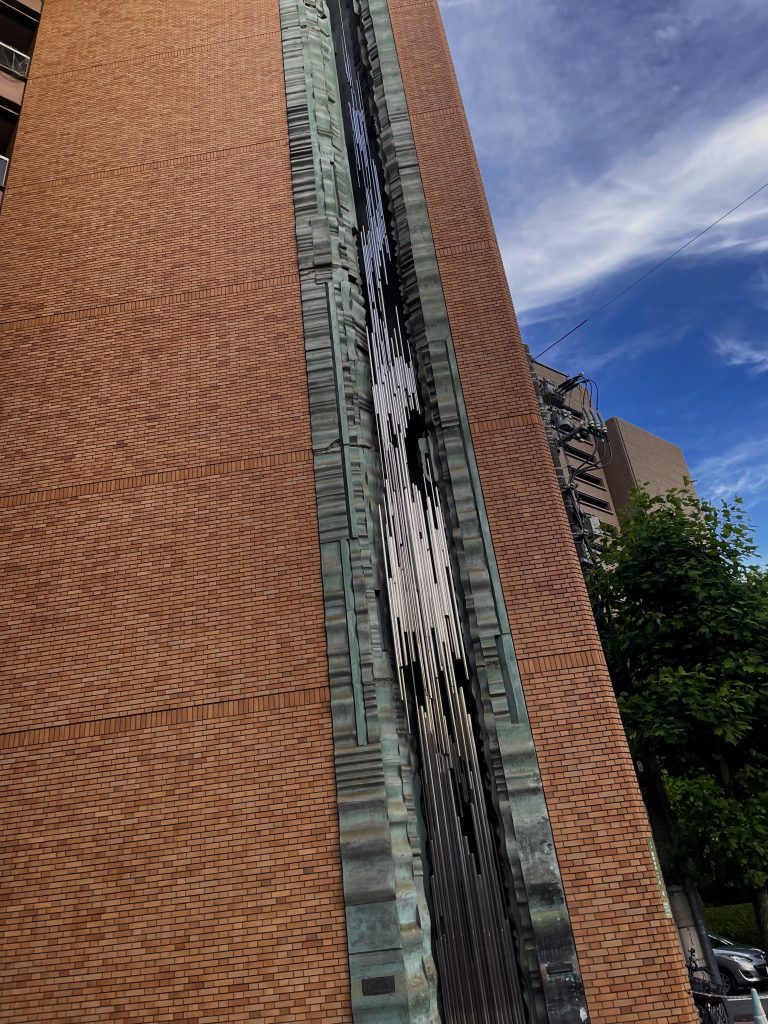
Wednesday we worked on our library project again at the WFC. We, had a free afternoon to explore the Peace Memorial Park some more, so that is what we did. We had originally planned to go to the park and rent one of their bikes and go to the correct Army Clothing Depot, but our IC card did not work with the bike rental. We, instead, went to the A-bomb dome and got a closer look. It is a pretty popular place for tourists, so we typically do not go up close. Hannah and I also decided to visit one of the underground museum exhibits in the park.
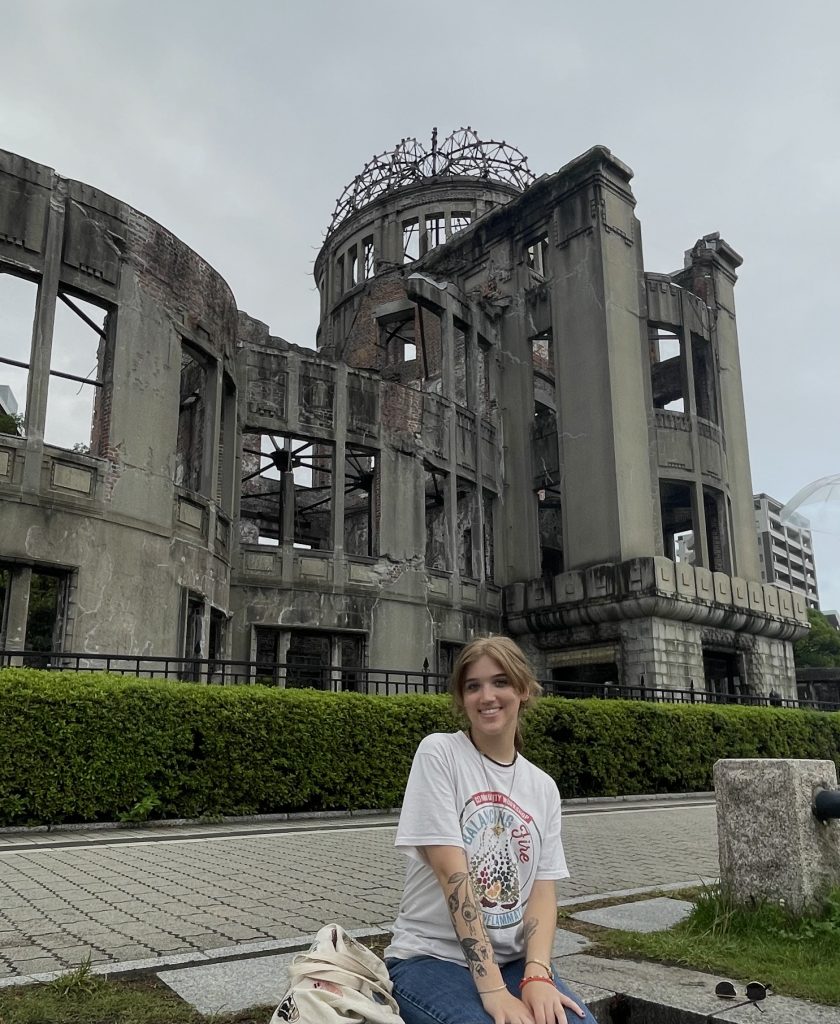
The main exhibits both above and below ground, both include somewhat abstract clocks. Above ground, the clock is glass, and below, the clock is a stone. The clock is set at 8:16. This represents the time the A-bomb was dropped on Hiroshima on August 6th, 1945. Both of these exhibits also include running water. The running water is meant to memorialize those who died from the bombing, begging for water. Victims of the bomb were so hot after the explosion, they begged for water, died trying to find water, or choked on water they found because their bodies were too hot. The running water symbolizes their struggle.
On Thursday, Hannah and I planned our weekend trip. We decided that we wanted to go to both Kyoto and Osaka. I had been wanting to visit Kyoto before I even left for Japan, so I am pleased that we were able to plan that trip. We found places to stay and figured out the railway pass. That night we visited the Hijiyama Military Cemetary. I had originally thought that this cemetery was only for victims of the A-bomb who were military personnel, but it actually includes soldiers from the first world war as well. The cemetery used to be in a different spot, but it was moved after the US built the Atomic Bomb Casualty Commission (ABCC). The ABCC was a US organization that tested on and collected data from survivors of the A-bomb and the radiation. Their practices, from what I have learned, were very unethical. Now, it is the Radiation Effects Research Foundation (RERF), which is a joint effort of radiation research from both Japan and the US. Operations seemed to be different now as it is a more peaceful, cooperative effort from both countries to study the effects of radiation. After the cemetery, we had dinner with our host family at a restaurant, as it was our light night staying with them (until later in August). We went to a Vietnamese place and we all seemed to enjoy the food. After dinner, Hannah and I packed up all of our things, in order to get ready for our trip and our new hostel.
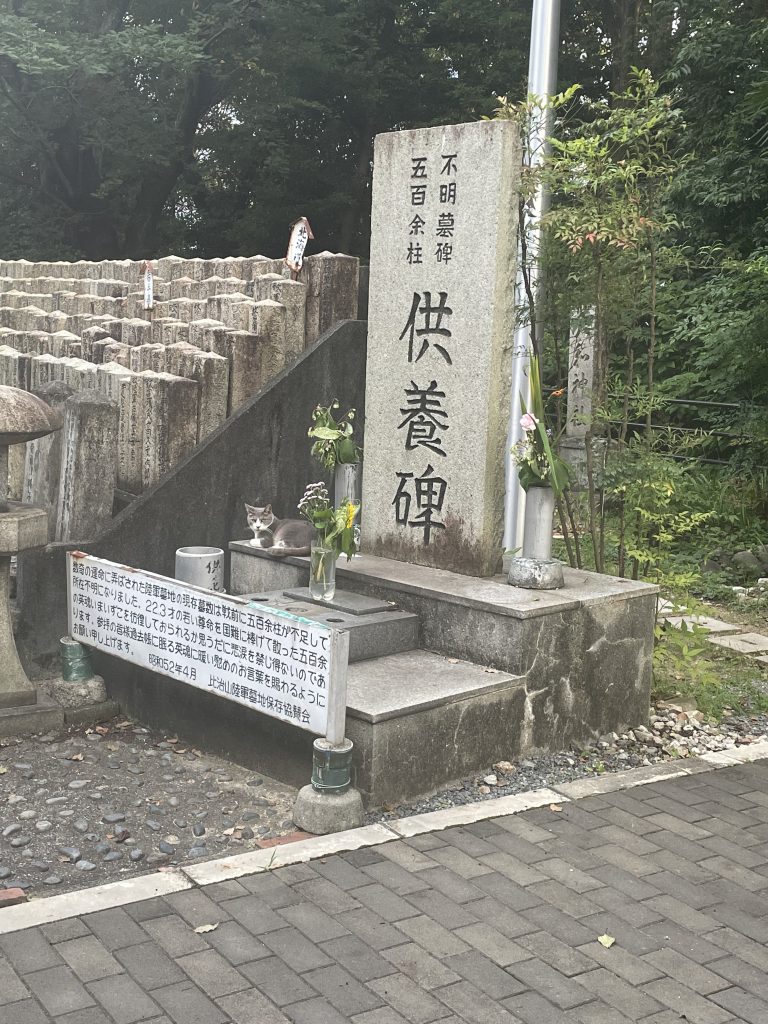
The next morning we moved our belongings to WFC because we were leaving for Osaka right after work. Friday was a day for listening and reflection. Goro-san is a Hibakusha and he was willing to share his story with us on Friday. Hannah and were very grateful for this opportunity and his willingness to share his recount of the bombing and the aftermath with us. He was a child when the A-bomb was dropped. He said that we only suffered a scratch on his arm because he was able to take cover and his family lived a couple kilometers from the hypocenter. Some of his family was away when the bomb dropped, it was just him, his mother, his sister, and one of his brothers in Hiroshima. His sister suffered from burns but is still alive today. His mother was not initially exposed to radiation and was unharmed, but she had gone into the town, closer to the hypocenter after the bomb to notify Goro-san’s father via sending a letter. There, she was exposed to the radiation. She later suffered from a swollen spleen and the ABCC did tests on her and provided her with medicine too strong for her to take. She died from radiation exposure.
We were given time to write and reflect after he gave us his story. His story was emotional for me, so I am glad we had this time before we left for our trip.
After reflection, we left for the train station to get a train to Osaka. This is where the stress of our trip began. We had difficulties getting the ticket and getting to the train on time. But we finally, were able to take an hour and a half train ride to Osaka. It was much shorter than I imagined. Once we got to Osaka, we realized that we did not have our other rail pass. We only had one. We talked to the information desk and they said we either had to buy a new one or go back and find the old one. They called Hiroshima Station and they said the pass was found. The passes are expensive and the train ride was free, so we hatched a plan. We went to our hostel and then decided to look around the town. We walked for a while but eventually decided to go back. Hannah, being the trooper she is, got on the earliest train (6:00 am) to Hiroshima, picked up the ticket, and got another train back to Osaka. She was back by 11:00 am. We went to Dotonburi after, which is a famous shopping street. It was hot and sunny, and we were exhausted. We went to the castle after even though we were exhausted. I did not go in because I was too tired to climb, but I got some pictures outside. We left the castle and decided it was time to head for Kyoto.
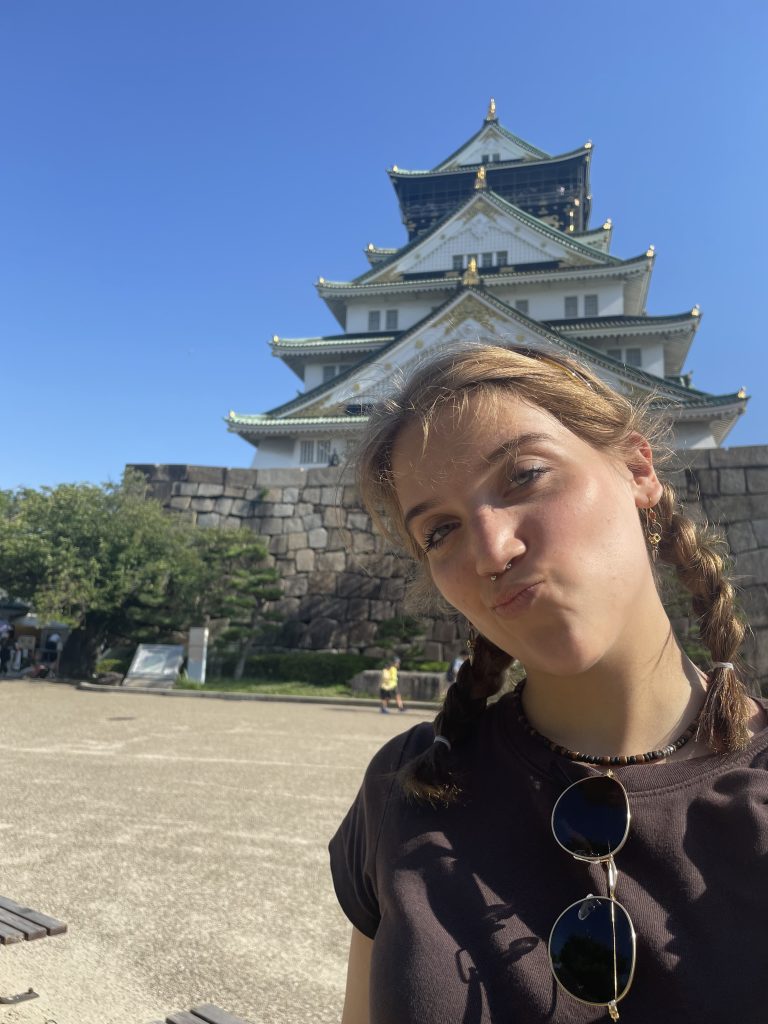
We got to the train station and caught a train to Kyoto. It took us less than half an hour to get there. We checked into our hostel, and once again, decided to check out the popular part of town. The next day we went to the famous golden temple, Kinkaku-ji. Again, it was sunny and hot, so we got exhausted quickly. After, we wanted to go to Fushimi Inari Taisha, the famous red shrine, but it was too hot for us. We decided to try an Okonomiyaki place instead. I was able to use an infographic I received earlier in the week to explain what I could and could not eat to the waitress and chef. They said I could have Okonomiyaki (traditionally made with egg) but it would be difficult and a very small portion. I was willing to try it, but because of the difficulty and the stress I was causing the staff, I decided to eat curry instead. I love curry though, so I did not mind.
We decided that we would go to Fushimi Inari Taisha at night because it is open 24 hours and is lit up at night. By the time we were ready to go, we were too tired and made a new plan to go the next day. we decided to go later in the evening the next day so there would not be as many people and it would be less hot. The next morning we went shopping at some of the places we wanted to visit. I was able to visit the Snoopy store, and I love Snoopy, so that was a great experience. We went to the shrine, but we did not visit the whole thing because we were so exhausted and still had to catch a train back to Hiroshima in order to check into our hostel in time. We got to the station, caught our train to Osaka, and then from Osaka to Hiroshima. We got to our hostel finally and went straight to bed. Our hostel is really nice and it is meant for international youth travelers.
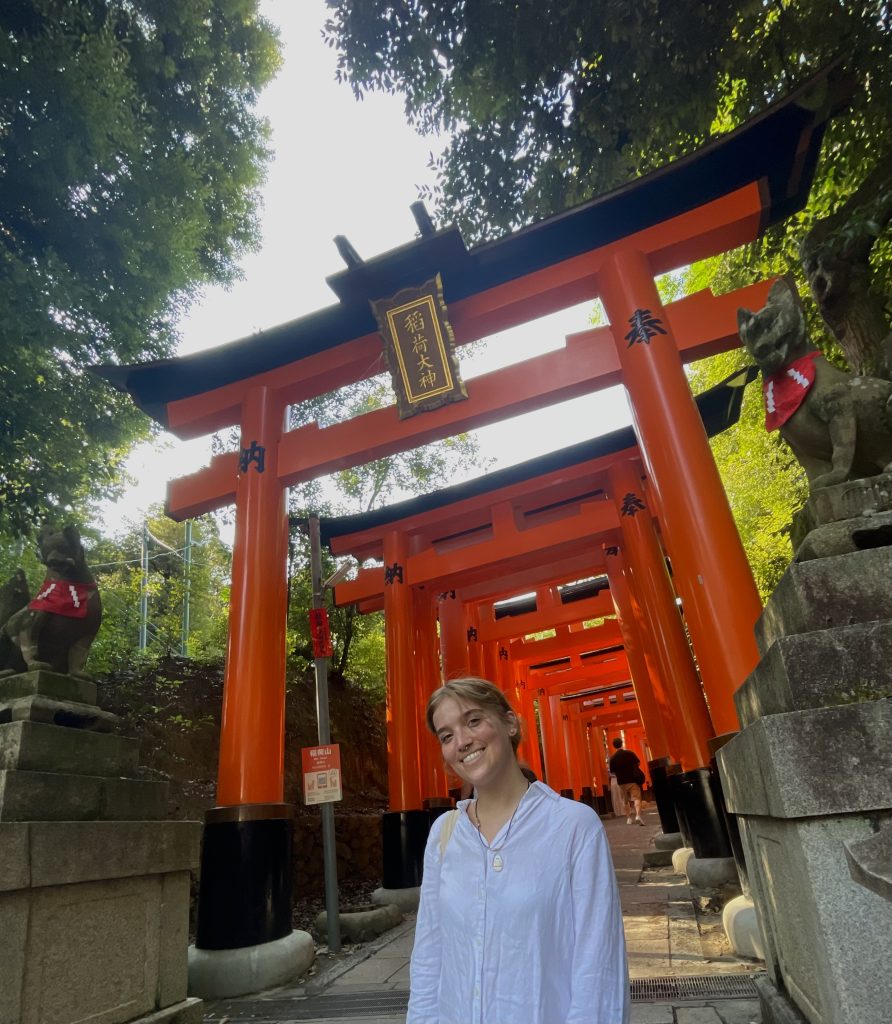
Here is what I learned this week and what I have planned for the rest of my time here:
One major thing I learned was that I love Hiroshima and am thankful I am living there instead of in a bigger city. Kyoto and Osaka were so difficult for us transportation wise and everything was so busy all the time. Being in those cities made me realize how easy it was for us to become familiar with Hiroshima. We were able to get to our hostel without using a map last night. I never considered Hiroshima a small city until after seeing Kyoto and Osaka.
I also learned to become more open to communicating my dietary preferences to restaurants. Before, I decided that rather than eating at a restaurant, it was less stressful for me to just grab something from the konbini or make something myself. I have decided that I want to communicate more because it is possible to be vegan in Japan, there are people that do it successfully.
As for my plans, I need to work harder on our library project. We are working at a snail’s pace it seems, making little progress each day. I am going to dedicate more time each day to the books and give myself a goal as for many how many books I should enter into the catalog each day. I plan to tour the trees affected by the A-bomb tomorrow morning. This weekend, I plan to take part in a traditional Japanese tea ceremony.
There’s all the information I have from this week. I will continue to update throughout the week. Thanks for reading!
Mata later,
Zoe
